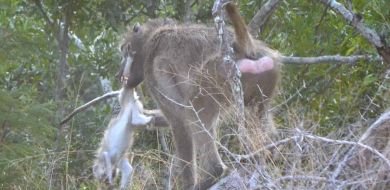Pic of the Week #34
on Jul 14, 2017The future

When conducting a safari, every guide has that one image or sighting that he/she dreams of seeing or capturing, this being leopard cubs.
This particular leopard cub, being one of our famous females’ currently on the reserve commonly known as Little Bush female and her latest litter only surviving offspring. This cub does not carry the traits of her mother’s elusive shy behaviour, instead she is relaxed, calm and a real pleasure when viewing. In this image that I capture this female cub, she was relatively inquisitive and decided to stalk a Spotted Hyena, however she lost interest and decided to soak up some of the beautiful mid-morning sunlight on a pushed over Marula tree while glancing into the distance.
For the future, I honestly hope that Little Bush female allows this beautiful cub to attain a close by neighbouring territory to hers, just like her previous cub, Kigelia, so we can be blessed with many more special sightings to come as we watch her grow up into a stunning leopardess.
Equipment used
- Camera – Canon 600D
- Lens and Focal length – Sigma 70 – 200 mm F2.8 at 200mm
Settings used for this image
- ISO – 100 as the light was intense due to the time period being mid-morning.
- Aperture of 2.8 in order to create great detail on the subject (leopard cub) and try to minimise the detail of the background and the vegetation as it was in the shade of a drainage line as the cub was positioned up high in the sunlight. Therefore, the focus was solely put on to the leopard cub and the light rays upon its dorsal.
- 1/500 shutter speed, which is a low shutter speed for high intense light, however the leopard cub was fairly stationary and this allowed for the maximum use of detail when capturing the image, especially with the 2.8 aperture.
Editing used on this image
Not much editing was put into reconstructing this image as the setting used were able to capture the image to the best of my ability as I saw it in my head. However, changing such image to a black and white image requires a high percentage clarity, increased whites and decreased black colours as well as getting the combination of these two colours to make the image stand out, and that was done by using the tone curve.






